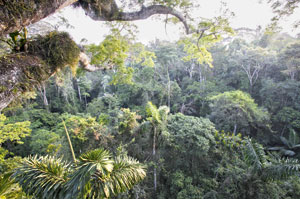Saving rainforests needs both property rights and payments

Still Pictures
Forests lock up a lot of carbon. Cutting them down accounts for around 20% of the world’s emissions of greenhouse gases. On paper, halting deforestation should be the simplest way to cut emissions. Achieving a similar reduction by building wind turbines or nuclear-power stations, or by mandating more fuel-efficient cars and buildings, would take years and cost billions. In practice, however, halting deforestation is hard: much of the world’s rainforest has already succumbed to loggers and farmers. That is because it is difficult to align the interests of people who live in forests (now 20m in the Brazilian Amazon) with those of the rest of humanity.


 In 2006 Mario Lebrato and Daniel Jones of the National Oceanography Centre in Southampton, England, were using a remotely operated deep-sea vehicle to study the sea floor near an oil pipeline off Côte d’Ivoire. What they found surprised them. It was a thaliacean graveyard. And its discovery throws into question the received wisdom about one important aspect of climate change, namely how much carbon from the atmosphere ends up at the bottom of the sea.
In 2006 Mario Lebrato and Daniel Jones of the National Oceanography Centre in Southampton, England, were using a remotely operated deep-sea vehicle to study the sea floor near an oil pipeline off Côte d’Ivoire. What they found surprised them. It was a thaliacean graveyard. And its discovery throws into question the received wisdom about one important aspect of climate change, namely how much carbon from the atmosphere ends up at the bottom of the sea.

Recent Comments